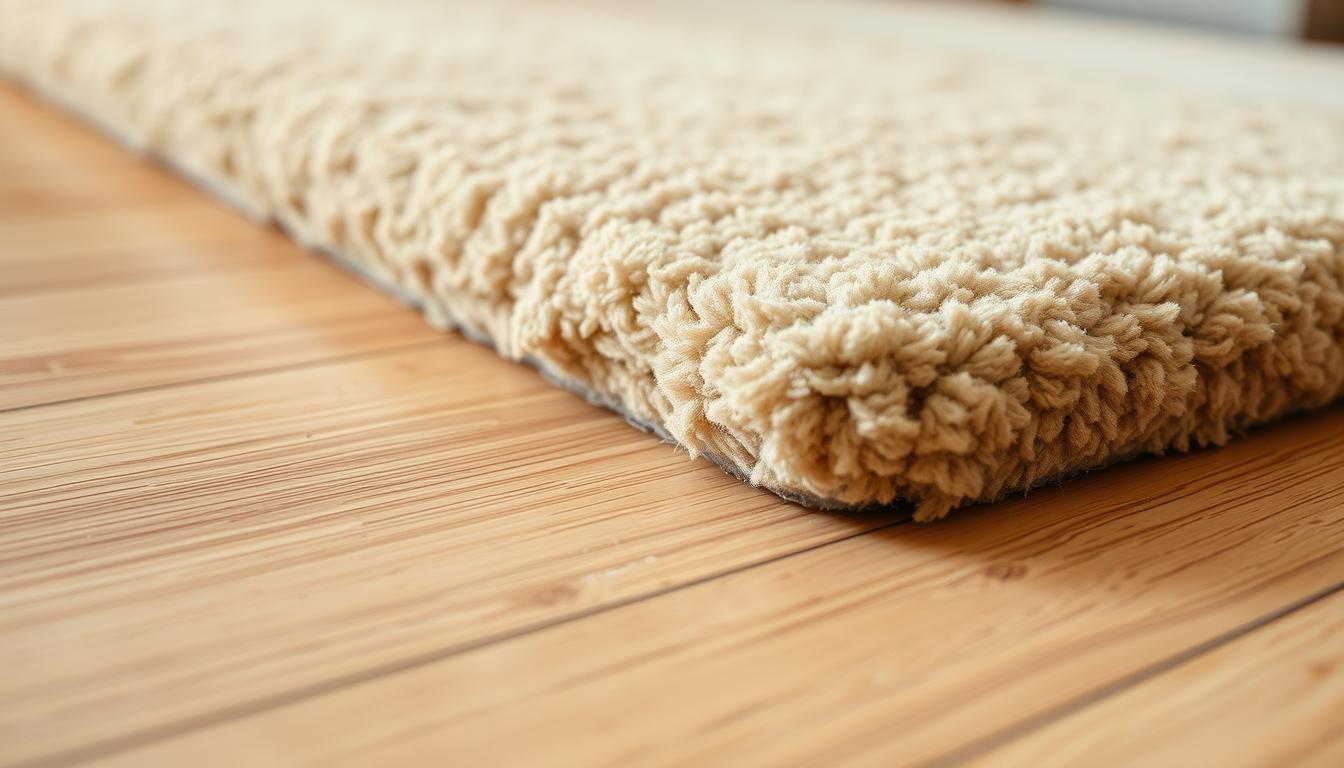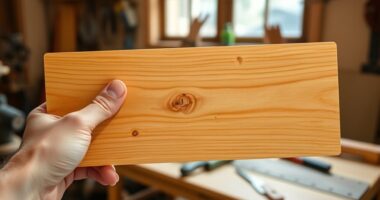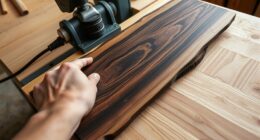Did you know that improperly finished carpet edges can reduce the lifespan of your carpet by up to 50%? This startling statistic highlights the importance of sealing carpet edges for a flawless finish that not only elevates the aesthetics of your space but also protects your investment. When you take the time to seal carpet edges during your carpet installation, you significantly reduce the chances of fraying and wear, ensuring your carpets maintain their appeal and durability for years to come. A professional touch in edge sealing can transform your home into a well-maintained haven, making a remarkable difference in every room.
Key Takeaways
- Sealing carpet edges is crucial for longevity and presentation.
- Improperly finished edges can lead to a 50% decrease in carpet lifespan.
- A flawless finish enhances the overall aesthetic of your home.
- Effective edge sealing prevents fraying and wear over time.
- A professional look can increase the value and appeal of your space.
Understanding the Importance of Carpet Edge Sealing
Sealing carpet edges plays a vital role in your flooring investment. Unbound edges are prone to fraying and unraveling, which distorts the weave pattern of your carpet. This can create both visual and functional issues that detract from the overall look of your home.
The importance of carpet edging cannot be overstated. Properly sealed edges provide a robust defense against wear and tear, especially in high-traffic areas. This protective measure not only maintains the carpet’s aesthetics but also enhances its longevity, making it a smart choice for anyone serious about carpet maintenance.
By investing in carpet edge sealing, you essentially extend the life of your carpet. Regular upkeep and sealing can prevent potential damage, ensuring you enjoy your flooring for many years. You’ll find that a well-maintained carpet is not just visually appealing but also more comfortable underfoot, enhancing the ambiance of your living space.
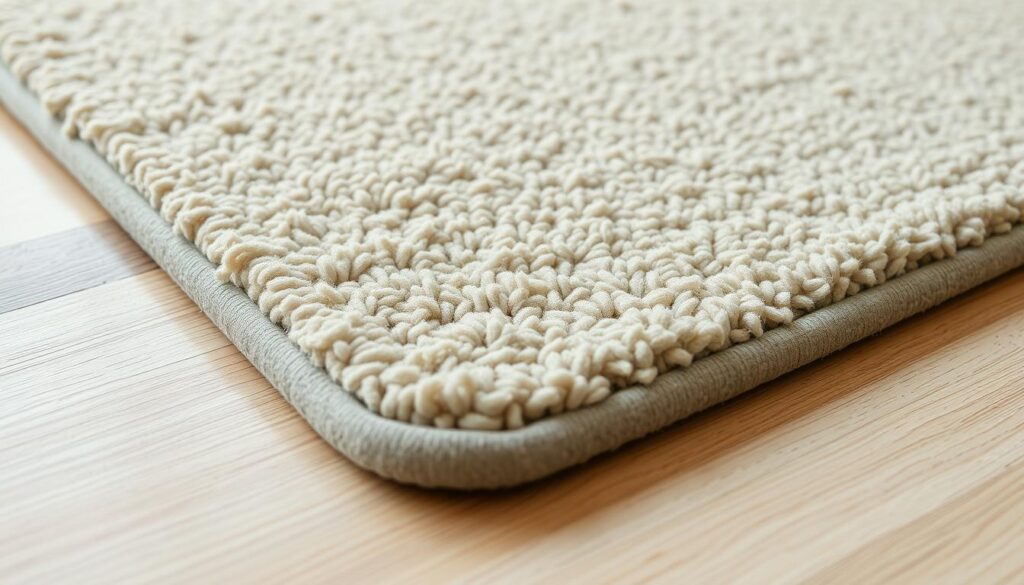
Materials Needed for Carpet Edge Sealing
Before diving into your carpet edge sealing project, gathering the right carpet edge sealing materials is essential for achieving a polished result. Here’s a concise list of items you will require:
- Binding Tape or Instabind: This is crucial for securing the edges of your carpet effectively.
- Scissors: A good pair of scissors helps in cutting the binding materials accurately.
- Hot Glue Gun: This tool is perfect for affixing the binding securely to the carpet.
- Double-Sided Tape (optional): Use this if you need additional reinforcement.
- Carpet Padding (optional): If your edges need more cushioning, this can be a great addition.
Familiarizing yourself with these tools for carpet binding ensures you’ll have a seamless experience. Each item plays a specific role in the process, contributing to a tidy and durable finish. As you prepare, consider including a set of reliable DIY carpet tools, which often includes extras like measuring tapes and utility knives for an even smoother workflow.
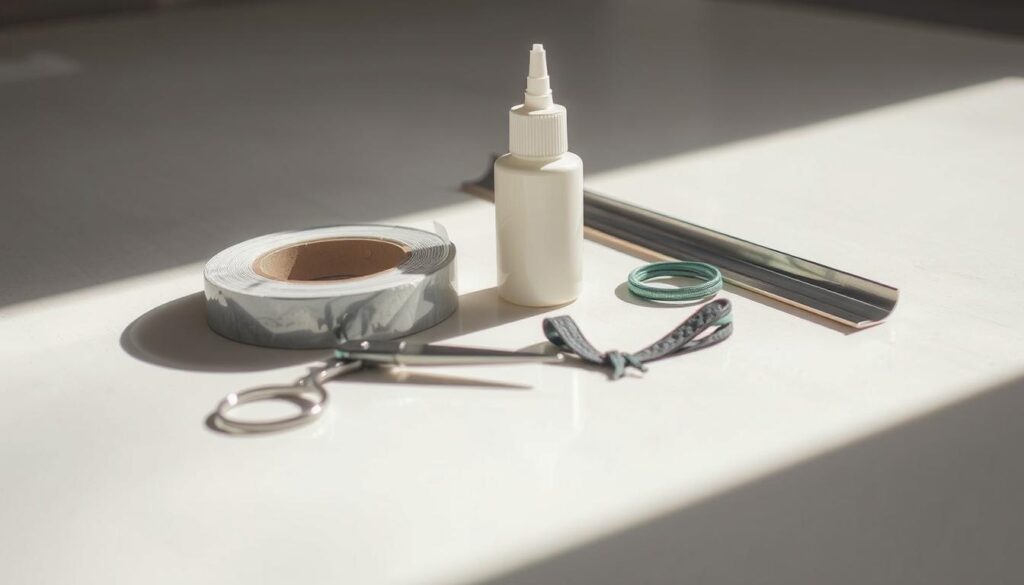
Step-by-Step Guide to Binding Carpet Edges
Binding carpet edges can seem like a daunting task, but with this step-by-step carpet binding guide, you can achieve a professional finish right at home. First, measure the edges of your carpet accurately to determine the length of binding material needed. This step is crucial for ensuring a precise fit.
Next, cut your binding material, which can be made from a variety of fabrics such as cotton or polyester. Make sure the material is wide enough to cover the edges comfortably. Choosing the right fabric will not only enhance the look but also improve durability.
After cutting the binding material, it’s time to secure it in place. You have two primary options for binding carpet edges: adhesive or sewing techniques. If you prefer a simpler approach, using an adhesive that’s specifically designed for carpet binding can yield excellent results. For those who enjoy DIY carpet binding, sewing the edges provides a robust and neat finish.

For a quick and effective solution, consider using Instabind, which allows you to bind edges without sewing. This product adheres easily and ensures a clean outcome. Remember, patience is key throughout this process. Take your time to align everything correctly, and you’ll enjoy beautifully finished edges on your carpet.
How to Cut Carpet Edges for a Neat Finish
Properly cutting carpet edges sets the foundation for a neat carpet finish. To achieve this, you’ll want to ensure that your cuts are precise and clean. Start by gathering the right tools, such as a sharp utility knife or quality scissors designed for trimming carpet. A straight edge or a ruler can also assist in maintaining straight lines.
When cutting carpet edges, push the blade through the carpet and backing in one smooth motion. This technique not only helps in cutting carpet edges accurately but also minimizes the risk of fraying. Utilize the straight edge as a guide to ensure a clean cut. For corners, carefully follow the curve to achieve a polished appearance.
It’s advisable to make small, incremental cuts rather than trying to trim large sections in one go. This approach results in more control, contributing to a neat carpet finish. After completing the cuts, check for any loose fibers that may need additional trimming to avoid unraveling over time. Regular practice and attention to detail will enhance your skill in cutting carpet edges effectively.
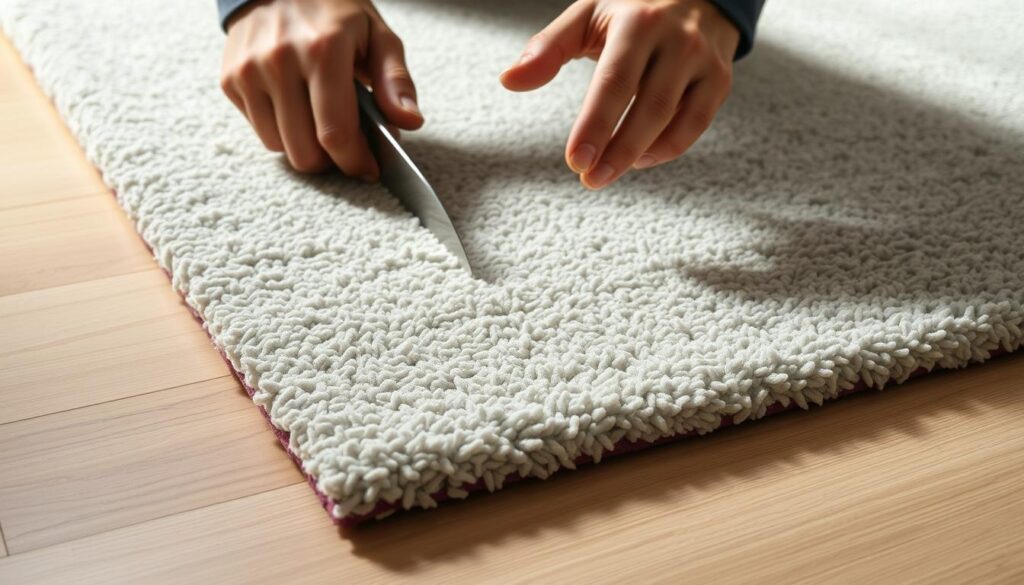
Choosing the Right Binding Material for Your Carpet
When selecting the ideal binding material for your carpet, you will discover various carpet binding options that can enhance both appearance and durability. Each choice comes with its benefits, making it essential to choose wisely.
The best carpet binding material often includes options such as fabric binding, yarn, cotton, or polyester. Fabric choices for carpet can significantly affect the final look. For instance, vibrant cotton bindings can add a splash of color, while neutral polyester blends can provide a subtle yet elegant finish.
Consider these factors when choosing your binding material:
- Color: Match the binding with your carpet color for a seamless look.
- Texture: Different fabrics offer varying textures, which can enhance tactile appeal.
- Durability: Ensure the chosen material can withstand foot traffic and cleaning.
Below is a helpful comparison of common binding materials:
| Material | Durability | Color Options | Texture |
|---|---|---|---|
| Cotton | Moderate | Wide range | Soft |
| Polyester | High | Variety | Smooth |
| Yarn | High | Limited | Textured |
| Fabric | Moderate | Variety | Soft/Smooth |
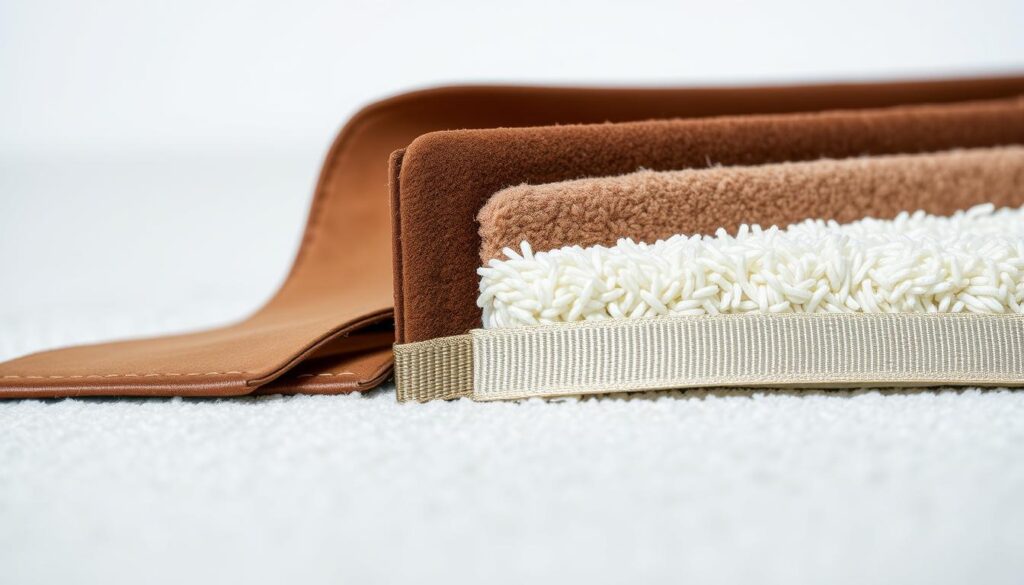
Benefits of Sealing Carpet Edges
Sealing carpet edges offers numerous advantages of carpet sealing that can transform the durability and appearance of your flooring. One significant benefit is the prevention of fraying. When carpet edges remain unsealed, they are more susceptible to wear and tear, which can lead to an unattractive look over time.
Another important aspect is the enhancement of longevity. Sealed edges provide a protective barrier, reducing the risk of damage from foot traffic and everyday use. This not only prolongs the life of your carpet but also contributes to its overall value.
Improved aesthetic appeal is another advantage. Clean, sealed edges create a polished and professional finish, making your carpets look new for longer periods. This aspect plays a crucial role in the impression your home gives to guests.
With regard to carpet maintenance benefits, sealed edges significantly simplify the cleaning process. Dust and dirt are less likely to get trapped in raw edges, making regular upkeep easier and more efficient. This maintenance not only keeps your home looking pristine but also promotes a healthier living environment.
Taking advantage of the sealing benefits means investing in your home’s comfort and beauty. With the right approach, sealing carpet edges can ensure that you enjoy all these benefits for years to come.
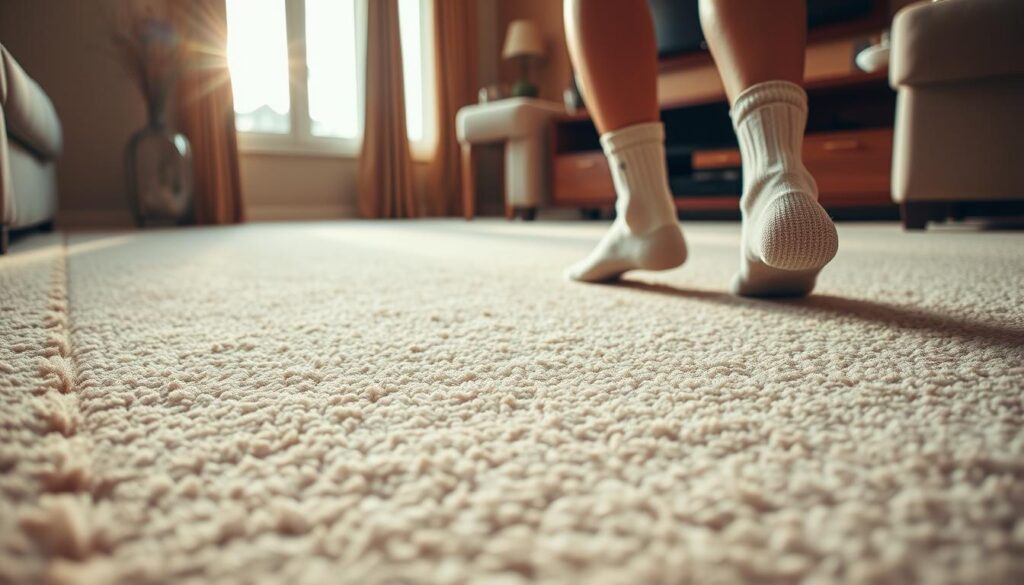
Banish Gaps Between Carpet and Baseboard for a Flawless
Gaps between your carpet and baseboard can disrupt the overall look of a room, making it feel less inviting. To achieve a polished appearance, it’s essential to focus on eliminating these unsightly spaces. One effective approach is gap sealing, where you can apply caulk or adhesive trim to fill in the openings, creating a seamless transition between the carpet and baseboard finish.
Using trim not only conceals gaps but also enhances the visual appeal of your flooring. When selecting trim materials, consider options that complement your carpet color and style for a unified look. An appropriate choice can elevate your space and contribute to a more professional finish.
To initiate the gap sealing process, first, measure the spaces needing attention. Cut the trim accordingly, ensuring a snug fit. Apply a bead of adhesive or caulk where the trim and baseboard meet, then gently press the trim into place. This detail not only effectively banishes gaps carpet but also provides a sturdy and lasting solution.
After the trim is secured, a little touch-up paint can enhance the final look, blending everything harmoniously. This simple yet effective strategy can transform your carpet and baseboard finish, making your home appear more refined and well-cared-for.
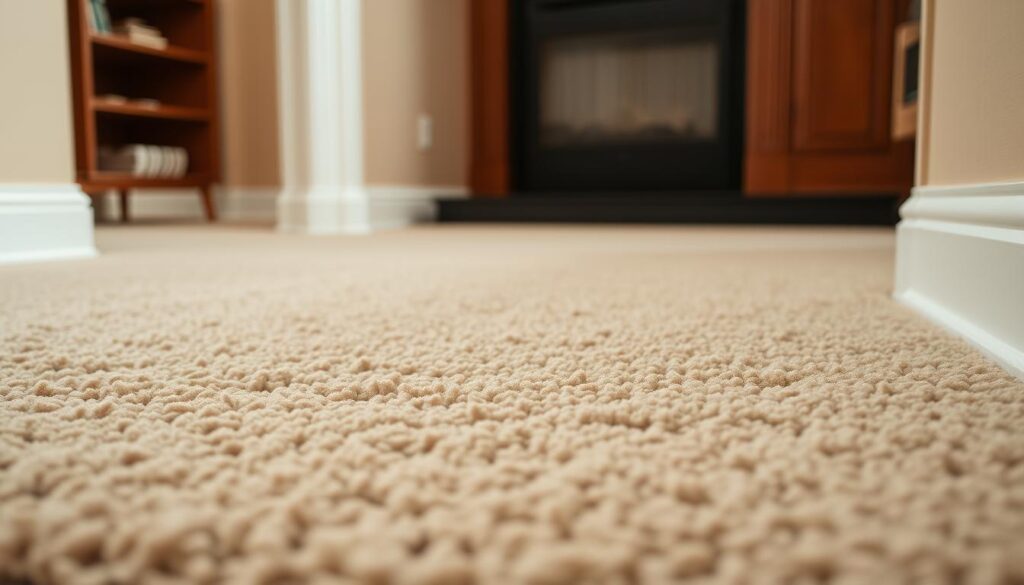
Alternative Methods for Carpet Edge Sealing
When looking for ways to seal carpet edges effectively, exploring alternative carpet sealing methods provides you with valuable options. Traditional binding techniques have their merits, but several innovative approaches can achieve similar, if not superior, results.
One popular choice among homeowners is serging. This technique involves stitching the carpet’s edges with a strong thread, creating a tight, durable finish. It is particularly beneficial for carpets that tend to fray. When comparing this with basic binding, serging offers enhanced longevity and a professional appearance.
Using fusible webbing stands out as another effective sealing technique. This method requires minimal tools and involves placing adhesive webbing along the edges and applying heat with an iron. The result is a neat, secure edge. This approach is easy for DIY enthusiasts, making it a favorable option for quick repairs.
Below is a comparison of these diverse sealing techniques to assist you in making an informed choice:
| Technique | Pros | Cons |
|---|---|---|
| Serging | Durable finish, prevents fraying, professional look | Requires a sewing machine, more time-consuming |
| Fusible Webbing | Easy to use, quick application, minimal tools needed | May not withstand heavy foot traffic as well |
Each of these carpet edge options allows for customization based on your specific needs and preferences. By evaluating the pros and cons, you can select the best method for your carpet sealing project.
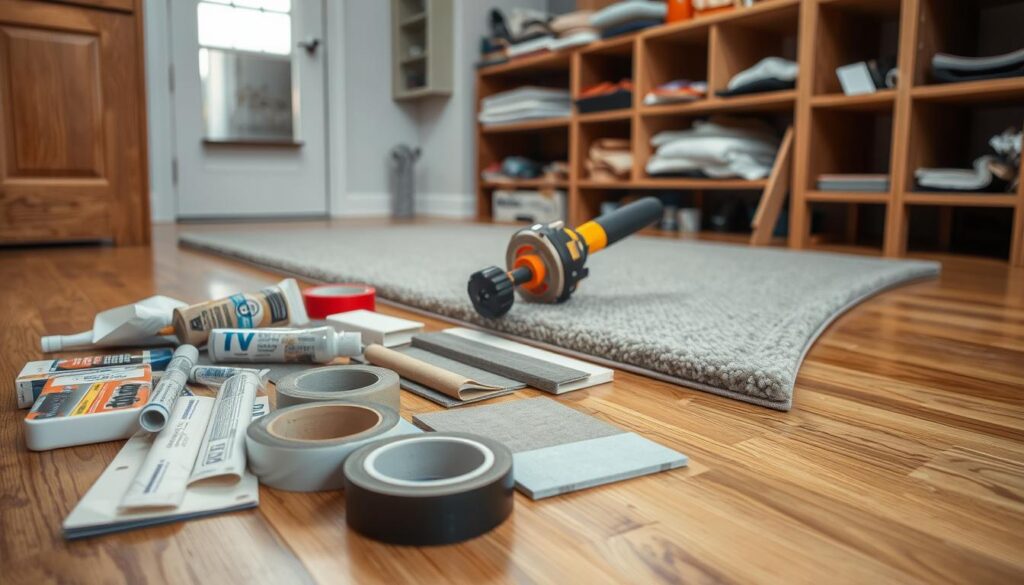
Common Mistakes to Avoid When Sealing Carpet Edges
Sealing carpet edges can enhance the overall appearance and longevity of your flooring. Avoiding mistakes carpet sealing is crucial for achieving a professional finish. One of the most common issues is inaccurate measurements. If you fail to measure correctly, you might end up with excess material or inadequately sealed edges.
Using inappropriate materials presents another significant challenge. Always ensure that you are using carpet binding products designed for your specific type of carpet. This approach will minimize potential carpet binding errors that could arise from mismatched materials.
Neglecting to apply fray-prevention products can lead to unsightly damage over time. To protect your investment, it’s vital to take necessary precautions to avoid carpet fraying. Below are some frequently encountered mistakes and how to prevent them:
| Mistake | Consequences | Prevention Tips |
|---|---|---|
| Inaccurate Measurements | Excess material or poorly sealed edges | Always double-check your measurements |
| Using Wrong Materials | Uneven finish or adhesive failure | Select materials designed for your carpet type |
| Neglecting Fray-Prevention | Fraying and reduced carpet lifespan | Apply fray-prevention products during sealing |
| Ignoring Care Instructions | Damage during cleaning | Follow manufacturer’s guidelines for maintenance |
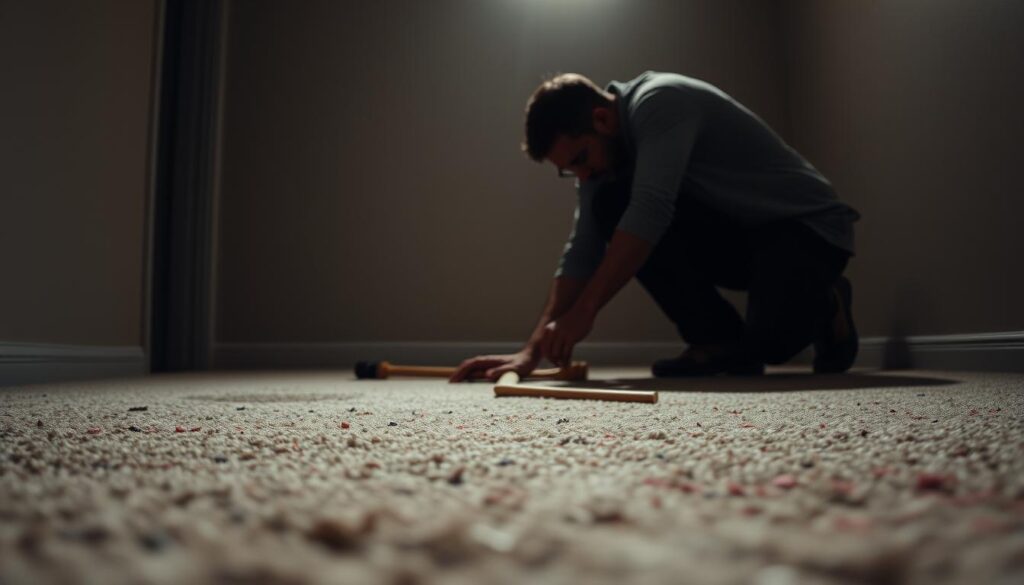
By being aware of these common mistakes, you can ensure a successful carpet edge sealing project. Prioritize accuracy, quality materials, and protective measures to achieve a flawless finish that lasts. This will not just enhance your home aesthetics but will also protect your investment.
Tips for a Professional Finish on Carpet Edges
Achieving a professional carpet edge finish requires attention to detail and the right techniques. Start by selecting binding material that complements your carpet’s color and texture. A well-matched binding won’t just enhance carpet edge aesthetics but will unify the room’s overall look.
Begin with even edges; always trim your carpet neatly for a polished appearance. Before securing the binding, take a moment to check for loose threads. This small step can make a world of difference in the final presentation.
Here are some essential tips for carpet binding:
- Choose the right color: Pick a shade that aligns with your carpet. This decision significantly impacts the visual appeal.
- Consider texture: The binding’s texture can create contrast or harmony with the carpet fibers.
- Measure carefully: Accurate measurements prevent excess material waste and ensure a tighter fit.
- Use quality adhesive: High-quality adhesive enhances durability and prevents lifting over time.
For a more comprehensive understanding of the best techniques, consider creating a checklist of your steps. Following these tips for carpet binding will not only improve your skill but will also boost your confidence in completing this home project.

Maintaining Your Sealed Carpet Edges Over Time
Regular carpet maintenance is essential for preserving the appeal and integrity of your sealed carpet edges. By implementing a few simple strategies, you can enhance the longevity of carpet edges and ensure they remain in excellent condition.
Begin with routine inspections to identify any signs of wear or damage. Check that the binding materials are intact to prevent fraying. A quick visual scan every few months can be highly effective in catching issues early.
Cleaning is another crucial aspect of sealed carpet care. Use a vacuum with a gentle brush attachment to remove dirt and debris without damaging the edges. For deeper cleans, opt for a designated carpet cleaner that is suitable for your flooring type.
Incorporate preventative measures, such as using area rugs in high-traffic zones. These rugs not only protect the edges but also add aesthetic value to your space.

Remember, investing time in maintaining your sealed carpet edges will significantly contribute to their longevity and keep your home looking its best for years to come.
How to Repair Frayed Edges on Existing Carpets
Repairing frayed carpet edges can seem daunting, but with the right approach, you can restore your carpets to their former glory. Begin by assessing the extent of the fraying. For minor damage, cutting back the frayed material sharply with scissors often suffices. Make sure to follow the line of the carpet fibers for a clean finish.
After trimming, consider using a carpet edge repair adhesive for a quick fix. Apply a thin layer of adhesive along the cut edges, then press the fibers closely together. This method helps prevent further unraveling and keeps the carpet looking neat.
For more significant repairs, binding the edges may be necessary. Purchase carpet binding tape, which typically comes in a variety of colors and materials to match your existing carpet. Lay the tape over the frayed edge, ensuring it aligns correctly, then use a carpet iron to heat seal the tape in place, completing the carpet edge repair effectively.
Following these methods not only helps in repairing frayed carpet edges but also enhances the overall appearance of your flooring. Regular maintenance and touch-ups can assist in restoring carpets before they become too damaged, ensuring longevity and comfort in your home.
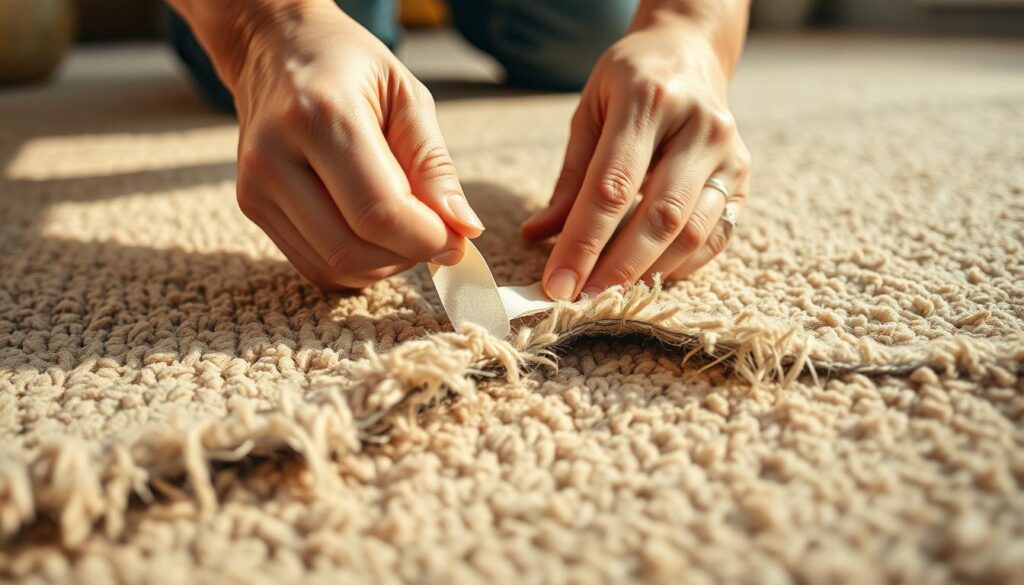
Conclusion
In summary, the importance of sealing carpet edges cannot be understated when it comes to maintaining the beauty and longevity of your flooring. This DIY project not only enhances the visual appeal of your home but also protects your investment by preventing fraying and wear. By following the steps outlined in this article, you equip yourself with the knowledge to achieve a professional finish.
Your final thoughts on carpet edges should emphasize the long-term benefits that come with proper sealing techniques. Not only do they contribute to a neat aesthetic, but they also ensure the durability of your carpets over time. As you care for your carpets, remember that a little effort can lead to significant rewards.
As you embark on this project, keep in mind the summary of carpet care you’ve learned here. With the right tools and techniques, you can transform your carpets, showcasing your home’s unique style while enjoying the peace of mind that comes from a well-maintained floor.
